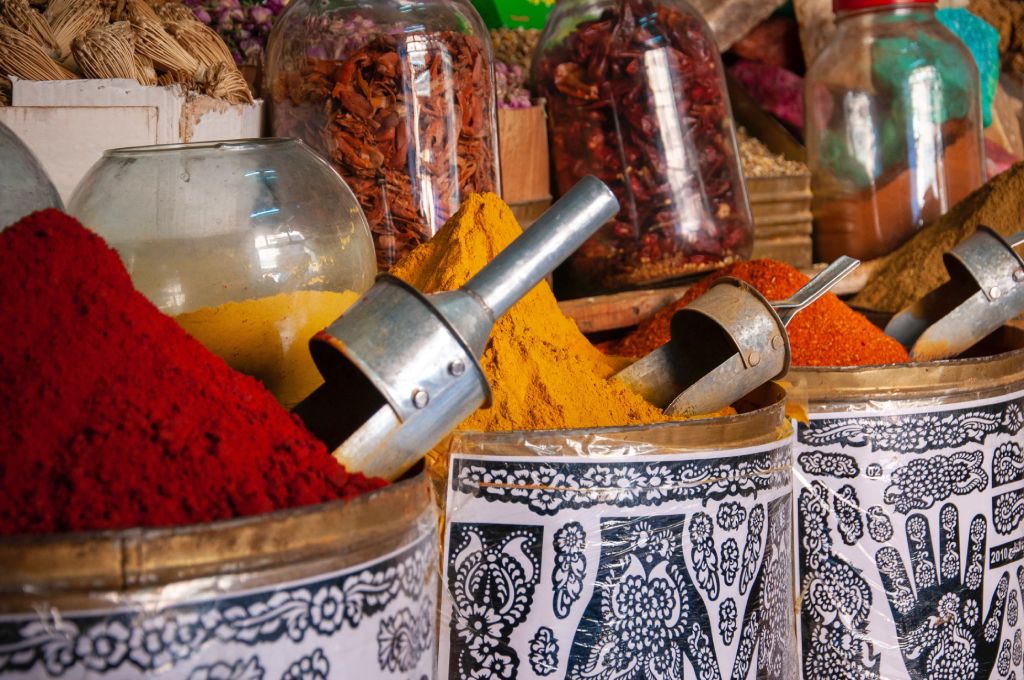
As one of the world’s most widely used and versatile spices, turmeric is valued for its vibrant colour, distinct earthy flavour, and wide range of health benefits.
Due to its growing popularity, turmeric has gained significant attention in recent years. It is now commonly available in various forms, including fresh roots, dried powder, and supplements.
Additionally, turmeric extracts and curcumin supplements have become popular as a convenient way to incorporate their potential health benefits into daily routines.
What is Turmeric?
Turmeric is a vibrant yellow spice that comes from the root of the Curcuma longa plant, which is native to South East Asia and is part of the ginger family. It has been used for centuries in traditional Ayurvedic and Chinese medicine due to its numerous health benefits.
Turmeric contains a compound called curcumin, which is where its distinct colour and most of its therapeutic properties come from.
What can Turmeric be Used For?
Traditional Medecine
Turmeric has powerful antioxidant and anti-inflammatory properties, making it a valuable component in Ayurvedic and traditional Chinese medicine.
In traditional medicine, it is used to relieve various health conditions such as to aid digestion, reduce inflammation, boost the immune system, and promote overall well-being.
It’s commonly prepared as a tea or included in herbal remedies to treat ailments ranging from arthritis, digestive disorders, and skin conditions to respiratory issues and liver ailments. Its many benefits have made it a popular ingredient in traditional medicine practices worldwide.
Cooking
Turmeric is a versatile spice, particularly in Asian cooking. It gives a warm, earthy flavour and a golden hue to lots of dishes. It’s a key ingredient in curries, spice blends, soups, and stews.
It’s also used to make nourishing and tasty drinks like golden milk, where it’s mixed with milk and other spices. Or, you could make a refreshing cup of tea by mixing it with some ginger and honey.
You could also add it to sauces, pickles and chutneys to give them some colour. Be careful though as it also stains everything it touches very easily.
As a Colourant
As well as its culinary and medicinal uses, turmeric is used as a natural colourant not only in food processing but in cosmetics and in the dyeing of fabrics. Its vibrant yellow pigment can produce various shades of yellow, ranging from pale yellow to deep orange, depending on the concentration and method of extraction.

Is Turmeric Good For Dogs?
Turmeric has recently become popular in treating joint pain in dogs. I have used it mixed with coconut oil and black pepper and have found it to be very effective for older dogs and those suffering from joint problems.
The properties found in black pepper help the absorption of turmeric in the body. Both of these ingredients have anti-inflammatory and antioxidant qualities and they work well together to help with joint pain like arthritis.
Although primarily used to add flavour and colour to dog food, it’santi-inflammatory properties mean that it is used to treat joint and bone disorders, digestive problems and pain relief.
What are the Health Benefits of Turmeric?
With its many healing properties, turmeric can be beneficial in both women’s and men’s health and is used to treat a wide range of conditions such as:
Arthritis
Thanks to its anti-inflammatory properties, it may help reduce swelling and stiffness in joint conditions like arthritis. It is also thought to have pain-relieving abilities and may help to alleviate the pain and discomfort associated with arthritis.
Heart Disease
As well as helping to reduce inflammation of the blood vessels and the heart, the antioxidant properties of turmeric may help protect the body’s cells from damage caused by harmful free radicals.
Some studies suggest that curcumin may help lower blood pressure by improving endothelial function. The endothelium is the inner lining of blood vessels. Dysfunction of the endothelium is a significant contributor to the development of heart disease.

Improved Memory Function
Chronic inflammation in the brain has been linked to cognitive decline and neurodegenerative diseases such as Alzheimer’s disease. By reducing inflammation, turmeric may help protect the brain and support memory function.
Curcumin has also been shown to increase the levels of BDNF, a protein that promotes the growth and survival of neurons. BDNF is crucial in the production of new connections between brain cells, a process known as neuroplasticity. By enhancing neuroplasticity, curcumin may support memory formation and learning.
Depression
The antioxidant properties present in turmeric may help protect the brain from oxidative damage, caused by an imbalance between free radicals and antioxidants, and promote overall mental well-being.
It may also influence the levels of neurotransmitters such as serotonin, dopamine, and norepinephrine. These chemicals play crucial roles in regulating mood and emotions. Some studies suggest that curcumin may enhance the production or availability of these neurotransmitters, potentially leading to improved mood.
Pain Relief
While turmeric and curcumin show promise in pain relief with their anti-inflammatory and antioxidant properties, it’s important to note that their effects may vary from person to person. Additionally, the body absorbs and uses the components poorly.
Combining turmeric with black pepper or consuming curcumin with healthy fats can enhance its absorption.
Menopause Symptoms
During menopause, there is a decline in estrogen levels, which can lead to hormonal imbalances. Some studies suggest that curcumin may help regulate hormone levels by influencing the activity of certain enzymes involved in hormone metabolism.
By promoting hormonal balance, turmeric could potentially help manage menopause symptoms.
Does Turmeric Have Any Side Effects?
Turmeric is generally considered safe for most people when consumed in moderate amounts. However, like any other substance, turmeric may have some potential side effects like an upset stomach or allergic reactions.
Turmeric may also interact with certain medications, and supplements are not recommended during pregnancy and breastfeeding.
Can Turmeric Help with Weight Loss?
Turmeric could potentially aid weight loss with the help of its anti-inflammatory properties but a combination of a balanced diet and regular exercise is more likely to help in the long term.
Adding it to your meals as a spice or consuming curcumin supplements may have some health benefits, but it’s not a magic solution for weight loss.
How can Turmeric be Taken?
- Powdered turmeric: This is the most common and versatile form. You can add it to your cooking and use it to make drinks like smoothies, golden milk or tea. Start with small amounts and adjust to your taste preferences.
- Turmeric supplements: If you prefer a more concentrated form, you can find it in capsule or supplement form. Follow the instructions provided by the manufacturer for proper dosage.
- Fresh turmeric root: If you can find fresh turmeric root in your local market, you can grate it or finely chop it and use it in cooking, similar to how you would use ginger.
As with any natural product, it is advisable to consult with a healthcare professional before using turmeric for medicinal purposes, especially if you have underlying health conditions or are taking medications.
If you would like to add turmeric to your daily diet habits, here are a couple of simple, tasty recipes to try:
Turmeric Tea
Add some boiling water to 1/2 teaspoon of turmeric, a lump of fresh ginger and some black pepper. Leave to infuse then add a teaspoon of honey to taste. You may want to change the quantities to adjust the taste to your preferences. This is a lovely comforting drink with many beneficial healing properties. Ginger too is used to help ease symptoms of inflammatory diseases like COPD.

Vegetable Biryani
Cook 350g of basmati rice and put aside. Fry 1 chopped onion, some grated fresh ginger, and 2 cloves of crushed garlic in some butter until soft. Add 1tsp each of ground coriander, ground cumin, ground turmeric and a pinch of chilli powder and fry for another couple of minutes. Add 1L of water to the mixture, bring to the boil and season. Add 3 sliced carrots and 200g of French beans, simmer for 15 minutes then add 200g of cauliflower florets and simmer for another 10 minutes. Lastly, add the rice and stir in 1 tsp of garam masala and some lemon juice. Heat through, adjust the seasoning and serve with slices of boiled egg and coriander.
